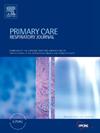Thinking fast and slow in pneumonia.
引用次数: 1
Abstract
139 PRIMARY CARE RESPIRATORY JOURNAL www.thepcrj.org "In my opinion", Hippocrates starts his book on Prognostics, "it is highly necessary that a physician should bestow the utmost pains in attaining a foreknowledge of events, for when, with the sick, he perceives beforehand, and evinces a clear conception of the past, present, and future, discovering at the same time the neglects which they have committed, a higher degree of credit will be paid to his knowledge of their situation: so that mankind will, with greater confidence, commit themselves to his care. The cure will be better performed from a foreknowledge; but it is not possible that all the sick should be restored to a state of health, as the power of effecting this would indeed far surpass any anticipation of consequences." Thus did the father of Modern Medicine lay the foundation of the art of prognostication in medicine. It is a necessary skill for a physician, but also one with uncertainties attached to its outcomes. However, according to Christakis, it is a skill that has been omitted from modern medical thought due to the emergence of effective therapies and a fundamental shift in the conceptualisation of disease in terms of diagnoses rather than with reference to patients. He added that prognosis became implicit in diagnosis and treatment, thus losing its explicit identity. Glare and Sinclair demonstrated quantitatively the subservience of ‘prognosis’ to ‘diagnosis’ and ‘therapy’ by measuring the number of hits in a PubMed search; the number of hits for prognosis was eight to nine times less than those for the other two terms. To an extent, the disappearance of ‘prognosis’ could be ascribed to the fact that the term is mostly associated with an answer to the question “Doc, how much time do I have?”, a question only one in three physicians discusses with their patients – and avoided because physicians find themselves ill-prepared for prognostication and find it stressful to make predictions. This digression into the ‘lost art in Medicine’ is prompted by the paper by Lee et al. in this issue of the PCRJ, which compares rules for predicting the severity of hospitalised nursing home-acquired pneumonia in Korea. Pneumonia is on the top of the list of causes of death in older ages and demands considerable attention from healthcare professionals, especially as their resources become limited. In response to constraints, the care setting for pneumonia has changed; this in turn is reflected in the varieties of pneumonia which have been described, resulting in a veritable ‘alphabet soup’: CAP, HAP, HCAP, NHAP, and VAP. Community-acquired pneumonia (CAP) is distinct from other nosocomial forms of pneumonia like hospital-acquired pneumonia (HAP) and ventilator-associated pneumonia (VAP). However, it is used as a catch-all classification for pneumonia acquired in non-hospital settings even when they are associated with health care. In 2005, the American Thoracic Society/Infectious Disease Society Guidelines designated pneumonia acquired in health care settings (like nursing homes and long-term care facilities) as health care-associated pneumonia (HCAP). A sub-group of HCAP was further distinguished as nursing home-acquired pneumonia (NHAP). The uses of a prediction tool in pneumonia include informing the physician about the management of the patient in terms of ‘when’, ‘where’ and ‘how’ – and, less commonly, informing the patient and/or family about the likely outcome. There are more such tools for CAP than NHAP, which would have been one of the motivations for Lee et al. to embark on their study. They pitted an NHAP-specific model against the Pneumonia Severity Index (PSI), SOAR (systolic blood pressure, oxygenation, age, and respiratory rate) and CURB-65 (confusion, urea nitrogen, respiratory rate, blood pressure, and age >65), and found that PSI had the greatest power of discrimination in predicting 30-day all cause mortality. Interestingly, in the original study where it was introduced, PSI did not predict mortality and was proposed as a prediction rule to identify low risk patients. In Lee et al.’s paper, PSI had a sensitivity of 78.3 and a specificity of 66.7, both below the 80 mark usually suggested as desirable for both sensitivity and specificity. Given such uncertainties, should such a mechanistic prediction rule guide the physician and supplant the art of prognostication with a machine? Although no head-to-head comparison between human and statistical prediction in respiratory diseases has been done, in mental health this has been a hotly discussed topic since 1954, when Paul Meehl, a Psychology professor, published his book comparing clinical versus statistical prediction. Meehl presented 20 studies, the oldest from 1928, where clinical and statistical predictions were compared, and demonstrated the superiority of statistical prediction – much to the consternation of the profession. More recent reviews, using meta-analytical techniques, have continued to confirm these initial findings. Meehl’s work influenced the Nobel prize-winning economist Daniel Kahneman, who in his latest book (whence the title of this editorial) highlights the Thinking fast and slow in pneumonia肺炎时思维的快慢。
本文章由计算机程序翻译,如有差异,请以英文原文为准。
求助全文
约1分钟内获得全文
求助全文
来源期刊

Primary Care Respiratory Journal
PRIMARY HEALTH CARE-RESPIRATORY SYSTEM
自引率
0.00%
发文量
0
审稿时长
6-12 weeks
 求助内容:
求助内容: 应助结果提醒方式:
应助结果提醒方式:


